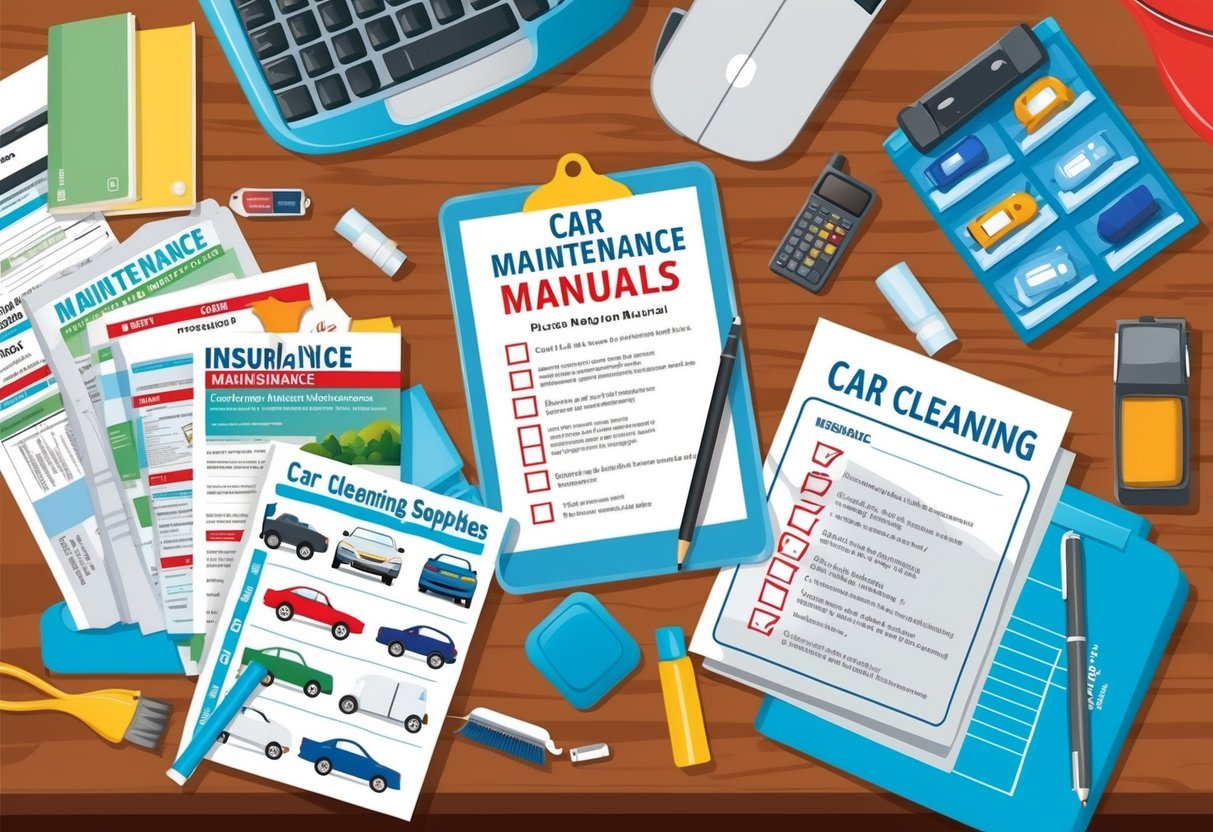
Making Essential Repairs and Replacements
Preparing a car for a quick and smooth sale means fixing visible flaws, resolving issues that affect reliability, and ensuring maintenance tasks aren’t neglected. Thoughtful repairs and replacements can signal to buyers that a vehicle has been well cared for.
Addressing Cosmetic Imperfections
First impressions matter, so it is crucial to pay attention to a car’s appearance before listing it. Small scratches, dents, or chips on the body can turn buyers away.
Addressing minor paint damage and removing dings or rust can refresh the car’s exterior without major investment. Deep cleaning of the interior—shampooing carpets, wiping down surfaces, and conditioning leather or fabric—can make a significant difference.
Replacing worn floor mats with new ones offers an affordable upgrade that quickly elevates the cabin’s appearance. Clean, streak-free windows further contribute to a positive impression.
If possible, polish headlights and taillights to remove cloudiness and restore clarity. Consider replacing missing or broken trim pieces, badges, or hubcaps for a more complete look.
For a practical checklist, refer to advice from comprehensive car sale preparation guides.
Fixing Mechanical Issues
Mechanical reliability greatly impacts both the speed and value of a sale. Addressing common concerns like worn brakes, faulty lights, or exhaust issues is often worth the investment.
Fixing essential safety items such as brake pads, tires, and headlights can reassure buyers and make the transaction smoother. It is recommended to resolve any dashboard warning lights by diagnosing and repairing underlying issues.
A recent oil change, along with documented servicing records, demonstrates recent maintenance. For larger repairs, weigh the cost against the potential return—sometimes, major repairs may not provide enough added value.
Keeping a file of service records and recent repairs is valuable. Buyers are often more confident when they can review documented maintenance, especially for key items such as brake fluid checks and mechanical repairs.
Checking Fluid Levels
Routine maintenance like checking and topping up all essential fluids increases buyer trust and prevents last-minute surprises. Key fluids include engine oil, brake fluid, transmission fluid, power steering fluid, and coolant.
Low or dirty fluids can signal neglect and raise red flags to potential buyers. Replacing the oil and oil filter is simple but reassuring.
It’s important to check the brake fluid; if it appears dark or low, consider flushing or topping it up, which can affect perceived vehicle safety. Look for leaks under the car and fix any visible issues.
Use a table to track maintenance before listing:
| Fluid | Check Level | Replace If Needed |
|---|---|---|
| Engine Oil | Yes | Yes |
| Brake Fluid | Yes | Yes |
| Transmission Fluid | Yes | Yes |
| Coolant | Yes | Yes |
| Power Steering Fluid | Yes | Yes |
Performing these small but important tasks helps prepare your car for sale, ensuring it passes buyer inspections and test drives.
Gathering Important Documentation

To prepare a used car for sale, collecting all relevant paperwork is one of the most vital steps. Proper documentation not only builds trust but also helps guarantee a quick, legal, and trouble-free transaction for both buyer and seller.
Title and Registration
The vehicle title proves ownership and is required to legally transfer the car to a new owner. Sellers should ensure that the title is in their name and that there are no outstanding liens.
If the document is lost or damaged, a duplicate must be requested from the motor vehicle department before starting the selling process. The registration certificate is equally important.
It shows that the car is legally registered and that road taxes are current. Both the title and registration should be up to date and easily accessible during the sale.
Review the details on these documents for accuracy, such as vehicle identification number (VIN), names, and addresses. Finalizing a sale often requires a completed bill of sale, which includes information from the title and registration.
For more about what paperwork is necessary, see this complete guide to the essential paperwork needed to sell a car.
Service History
A well-documented service history reassures buyers about how the vehicle has been maintained. Service records may include oil changes, tire rotations, brake inspections, and repairs.
Keeping receipts and detailed logs helps verify that routine maintenance was performed and parts were replaced as recommended by the manufacturer. Presenting a complete maintenance and service record can increase buyer confidence and is often essential when attempting to secure a higher sale price for a used car.
Organize records chronologically or sort them by type of service for clarity. Highlight major repairs and include warranties for any recent work if applicable.
Buyers often prefer vehicles with transparent histories, so pulling together these records before listing the car can give a distinct advantage. It’s also helpful to summarize recent and noteworthy repairs or part replacements in a short list or table.
Vehicle Inspection Reports
Recent vehicle inspection reports or multi-point checklists are valuable when preparing your car for sale. An inspection from a reputable mechanic indicates the car’s condition and helps uncover any issues a potential buyer might raise.
Reports can include safety inspections, emissions testing, or a pre-sale assessment. A fresh inspection establishes transparency and allows the seller to address repairs before closing the deal.
Some jurisdictions require passing a state inspection before legal transfer of a used car. Include both the inspection certificate and any resulting repair receipts.
Sharing vehicle inspection documentation gives credibility and sets realistic expectations for buyers. For step-by-step details on other steps to prepare a used car, see this comprehensive guide on how to prepare your car for selling.